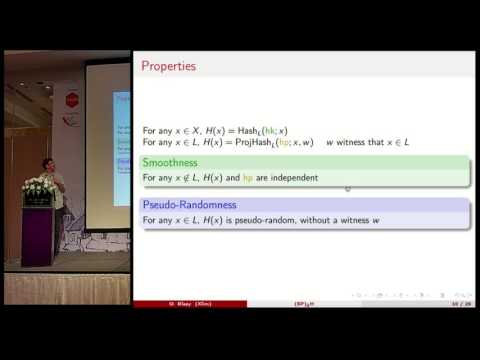Welcome to the resource topic for 2016/258
Title:
Structure-Preserving Smooth Projective Hashing
Authors: Olivier Blazy, Céline Chevalier
Abstract:Smooth projective hashing has proven to be an extremely useful primitive, in particular when used in conjunction with commitments to provide implicit decommitment. This has lead to applications proven secure in the UC framework, even in presence of an adversary which can do adaptive corruptions, like for example Password Authenticated Key Exchange (PAKE), and 1-out-of-m Oblivious Transfer (OT). However such solutions still lack in efficiency, since they heavily scale on the underlying message length. Structure-preserving cryptography aims at providing elegant and efficient schemes based on classical assumptions and standard group operations on group elements. Recent trend focuses on constructions of structure- preserving signatures, which require message, signature and verification keys to lie in the base group, while the verification equations only consist of pairing-product equations. Classical constructions of Smooth Projective Hash Function suffer from the same limitation as classical signatures: at least one part of the computation (messages for signature, witnesses for SPHF) is a scalar. In this work, we introduce and instantiate the concept of Structure- Preserving Smooth Projective Hash Function, and give as applications more efficient instantiations for one-round PAKE and three-round OT, and information retrieval thanks to Anonymous Credentials, all UC- secure against adaptive adversaries.
ePrint: https://eprint.iacr.org/2016/258
Talk: https://www.youtube.com/watch?v=chjvUqzfh4A
Slides: https://iacr.org/cryptodb/archive/2016/ASIACRYPT/presentation/27925.pdf
See all topics related to this paper.
Feel free to post resources that are related to this paper below.
Example resources include: implementations, explanation materials, talks, slides, links to previous discussions on other websites.
For more information, see the rules for Resource Topics .
